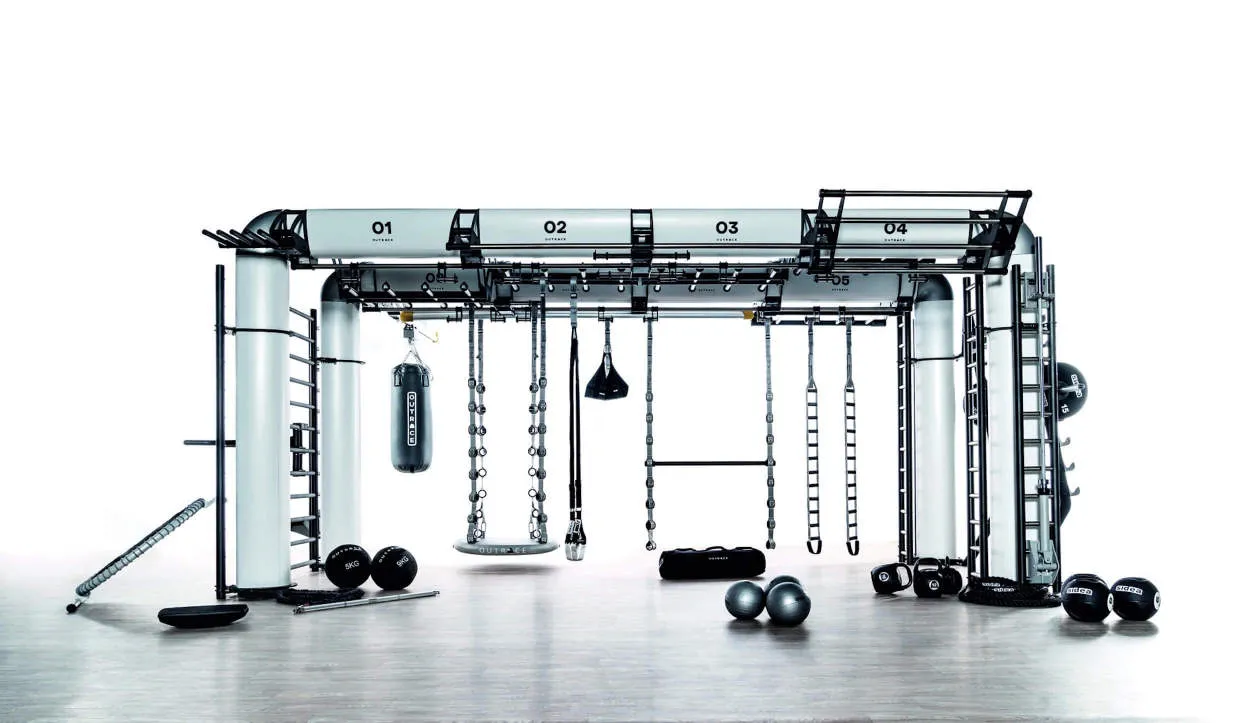Precision in sports is greatly influenced by cutting-edge equipment. The role of advanced gear and technology is paramount in enhancing athletes’ performance and optimizing their training. In this article, we will explore the significance of state-of-the-art sporting equipment and how it contributes to achieving peak performance in various sports disciplines.
Technological Advancements in Sports Gear
Sports gear has witnessed significant advancements in recent years, thanks to the constant evolution of technology. The integration of cutting-edge equipment has had a profound impact on precision in sports performance, revolutionizing the way athletes train and compete.
One major area of innovation is in wearables. Athletes now have access to a wide range of smart devices, such as fitness trackers and performance monitors, designed to provide real-time data on various metrics. These devices allow athletes and coaches to track and analyze crucial information like heart rate, speed, distance covered, and even sleep patterns. By analyzing this data, athletes can make informed decisions about their training, recovery, and overall performance optimization.
In addition to wearables, advancements in materials and design have greatly improved the performance of sports equipment. Manufacturers are constantly experimenting with new materials that offer enhanced strength, flexibility, and durability. For example, carbon fiber is now widely used in the production of bicycles, tennis rackets, and golf clubs, providing athletes with lighter and stiffer gear that enhances their speed and precision.
The incorporation of sensors and advanced tracking systems in sports equipment has also revolutionized precision in sports. For instance, in sports like cycling and skiing, helmets now come equipped with sensors that monitor impact forces and head movements, providing valuable insights into potential injuries and aiding in the development of safer equipment.
Moreover, the introduction of specialized footwear has significantly improved athletic performance across various sports. Running shoes with innovative cushioning technologies, for example, help reduce impact on joints, while basketball shoes with advanced traction patterns enhance grip and agility on the court.
Overall, technological advancements in sports gear have pushed the boundaries of human performance. Athletes now have access to cutting-edge equipment and tools that not only enhance their precision but also minimize the risk of injuries. As technology continues to advance, we can expect even more exciting developments in the world of sports gear, enabling athletes to achieve new levels of excellence.
The Accuracy of Modern Sports Equipment
In the world of modern sports, precision and accuracy are essential for athletes to excel in their respective disciplines. One crucial factor that contributes to this precision is the cutting-edge equipment used by athletes. Advancements in technology have revolutionized sports equipment, ensuring improved accuracy and performance.
For instance, in track and field, the introduction of high-tech footwear, such as running shoes with carbon fiber plates, has significantly enhanced athletes’ ability to run faster and more efficiently. These shoes provide optimal cushioning, stability, and energy return, allowing athletes to achieve new records in sprinting events.
In precision sports like golf and archery, equipment innovation has transformed the way athletes compete. Golf clubs are now designed using computer simulations and wind tunnel testing, resulting in clubs that offer increased control and accuracy. Similarly, archers benefit from advanced bows with improved stability and target-sighting technology, leading to pinpoint accuracy.
The accuracy of modern sports equipment is not limited to individual sports. Team sports like basketball and soccer also benefit from technological advancements. In basketball, advancements in ball manufacturing ensure better grip and aerodynamics, allowing players to shoot with more accuracy. Similarly, modern soccer balls are designed to have perfect roundness and consistent flight characteristics, enabling players to make precise passes and shots.
Furthermore, the use of sensors and data analytics technology in sports equipment has revolutionized athlete training and performance analysis. Wearable devices provide real-time feedback on body movements, allowing athletes to improve their technique and minimize errors. Coaches and trainers can also analyze data collected from these devices to identify weaknesses and devise training strategies accordingly.
In conclusion, precision in sports relies heavily on the accuracy provided by modern equipment. The continuous development and innovation in sports equipment technology have been instrumental in pushing the boundaries of human performance. As athletes continue to strive for excellence, the role of cutting-edge equipment remains crucial in achieving their goals.
Equipment Customization for Precision Sports
When it comes to precision sports, the role of cutting-edge equipment cannot be overstated. Athletes participating in sports that require precision, such as archery, shooting, golf, and billiards, understand the importance of having customized equipment.
Customization allows athletes to fine-tune their equipment based on their unique preferences and physical abilities. In archery, for example, the bow’s draw weight, length, and grip can be adjusted to achieve optimal aiming and shooting performance. Similarly, in shooting sports, the trigger pull weight and barrel length can significantly impact accuracy.
With technological advancements, the customization possibilities have become even more precise. The use of high-speed cameras and motion sensors allows for in-depth analysis of an athlete’s movements and performance. This data can then be used to tailor equipment to better suit an athlete’s needs.
One notable area of equipment customization is in golf. Golfers can have their clubs custom fitted based on their body measurements, swing speed, and playing style. Adjustments to club loft, lie angle, grip size, and shaft flex can greatly improve accuracy and consistency in shots.
The same principle applies to billiards, where the customization of cue sticks plays a vital role. Cue weight, tip shape and hardness, and length can all be customized to suit a player’s technique, aiming to achieve precision in each stroke.
Overall, equipment customization in precision sports allows athletes to optimize their performance and maximize their potential. It gives them a competitive edge by providing them with tools that align perfectly with their individual abilities and style. The demand for cutting-edge equipment tailored to the athlete will only continue to grow as technology progresses and new possibilities emerge.
The Future of Equipment in Professional Sports
When it comes to precision in sports, cutting-edge equipment plays a vital role in enhancing athletes’ performance and pushing the boundaries of human potential. As technology continues to advance at a rapid pace, the future of sports equipment looks promising, with exciting developments on the horizon.
One area of innovation is wearable technology. Athletes can now monitor their biometric data in real-time, allowing for personalized training programs and injury prevention. These devices, such as smartwatches and fitness trackers, provide valuable insights into an athlete’s heart rate, oxygen levels, and sleep patterns, enabling them to optimize their performance and recovery.
In addition to wearables, advancements in materials science have also revolutionized sports equipment. For instance, the use of carbon fiber has led to lighter and stronger equipment, improving speed, agility, and overall performance. Racquets, golf clubs, and helmets are just a few examples of sporting gear that have benefitted from these advancements, giving athletes a competitive edge.
The integration of artificial intelligence (AI) is another significant development in the world of sports equipment. AI-powered algorithms can analyze vast amounts of data to identify patterns, providing valuable feedback and insights to athletes. This technology can help optimize training regimens, refine technique, and even predict injuries, assisting athletes in achieving peak performance and prolonging their careers.
Furthermore, virtual reality (VR) and augmented reality (AR) are transforming the way athletes train and prepare for competition. VR simulations allow players to experience game-like situations, enhancing decision-making and improving reaction times. AR, on the other hand, overlays digital information onto the real world, allowing athletes to receive real-time coaching tips or review their performance during practice sessions.
Looking ahead, the future of equipment in professional sports holds even more promise. As advancements in technology continue to accelerate, we can expect to see innovations such as smart clothing that can monitor body temperature and hydration levels, robotic training assistance, and personalized 3D-printed equipment perfectly tailored to an athlete’s unique physiology.
In conclusion, the future of professional sports equipment is poised to revolutionize the way athletes train, perform, and recover. These cutting-edge innovations, from wearables to AI and VR, are pushing the limits of human potential and enabling athletes to reach new heights. With continued advancements on the horizon, the possibilities for improved precision and performance in sports are endless.
Balancing Tradition and Innovation in Gear
When it comes to sports, there is an ongoing debate about the role of tradition versus innovation in gear. While tradition holds a significant place in sports history and culture, the need for cutting-edge equipment cannot be denied. This delicate balance between preserving tradition and embracing innovation is crucial in promoting precision in sports.
Traditional gear often carries nostalgic value and is deeply rooted in the history of a sport. Take, for example, the wooden baseball bat in America’s national pastime. It symbolizes the heritage and craftsmanship associated with the sport. However, technological advancements have given rise to high-performance aluminum and composite bats, which allow players to hit the ball with greater speed and power.
Similarly, in tennis, the traditional wooden racket has been replaced by lightweight graphite and carbon-fiber rackets. These modern-day rackets provide players with increased power and maneuverability, enhancing their strategic gameplay. Although some may argue that the introduction of these technological advancements diminishes the essence of the sport, it undeniably enables athletes to achieve higher levels of precision and performance.
Nevertheless, preserving tradition in sports gear remains essential. Traditional equipment not only pays homage to the roots of a sport but also provides a level playing field for athletes. In archery, for instance, traditional recurve bows and longbows continue to be used alongside modern compound bows. The choice of gear allows archers to compete skillfully in both traditional and modern formats, ensuring the purity of the sport is maintained.
Striking the right balance between tradition and innovation is key. This balance enables athletes to leverage the advancements in technology while appreciating the historical significance of their sport. Incorporating innovative equipment can advance precision and performance, but it should be done thoughtfully, with respect for the sport’s heritage.
Conclusion
In conclusion, cutting-edge equipment plays a vital role in enhancing precision in sports. From high-tech racquets in tennis to advanced tracking systems in football, these innovations have revolutionized the way athletes perform. With continued advancements, we can expect even greater precision and accuracy in sports, ultimately pushing boundaries and inspiring athletes to reach new heights.




